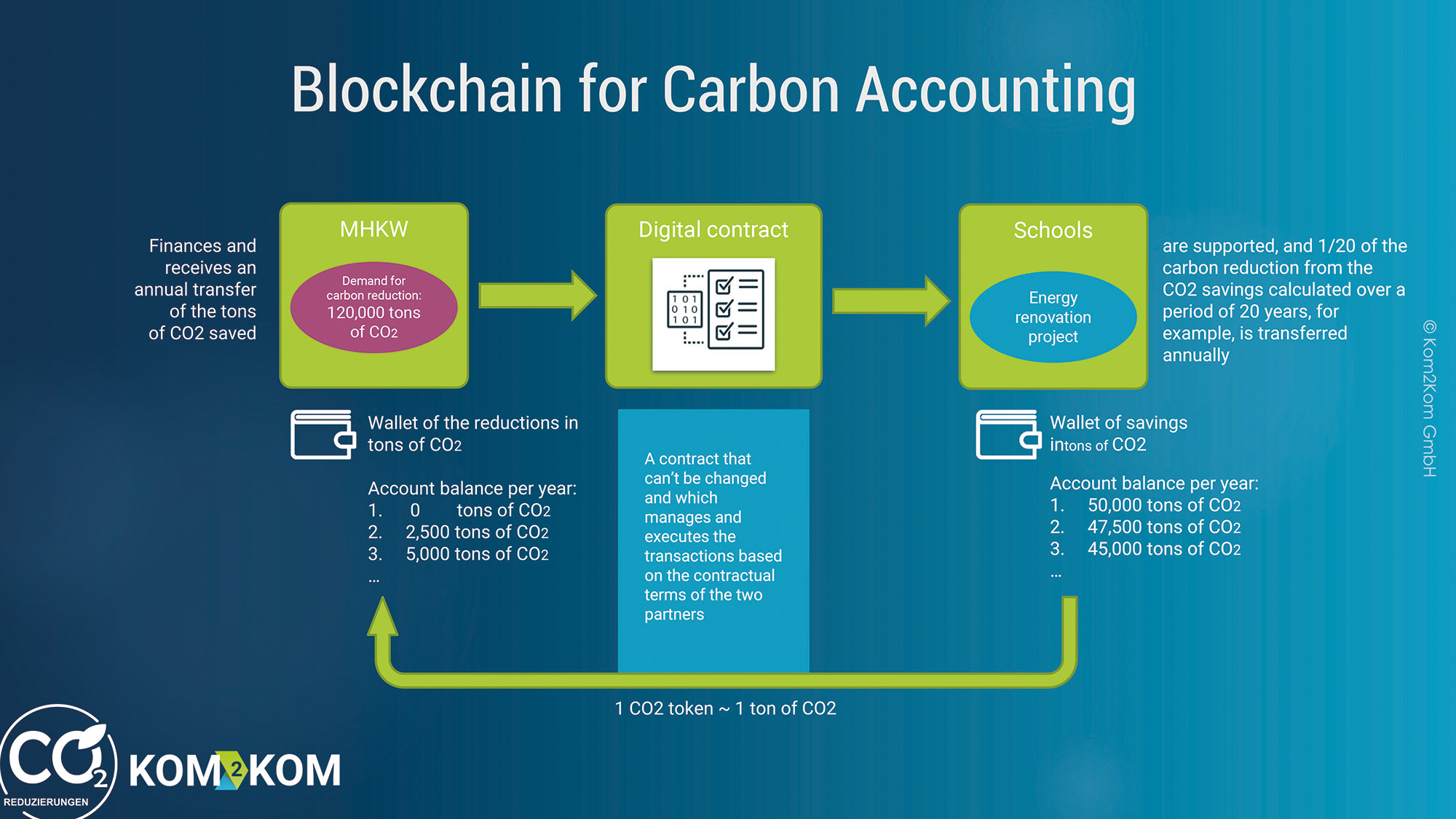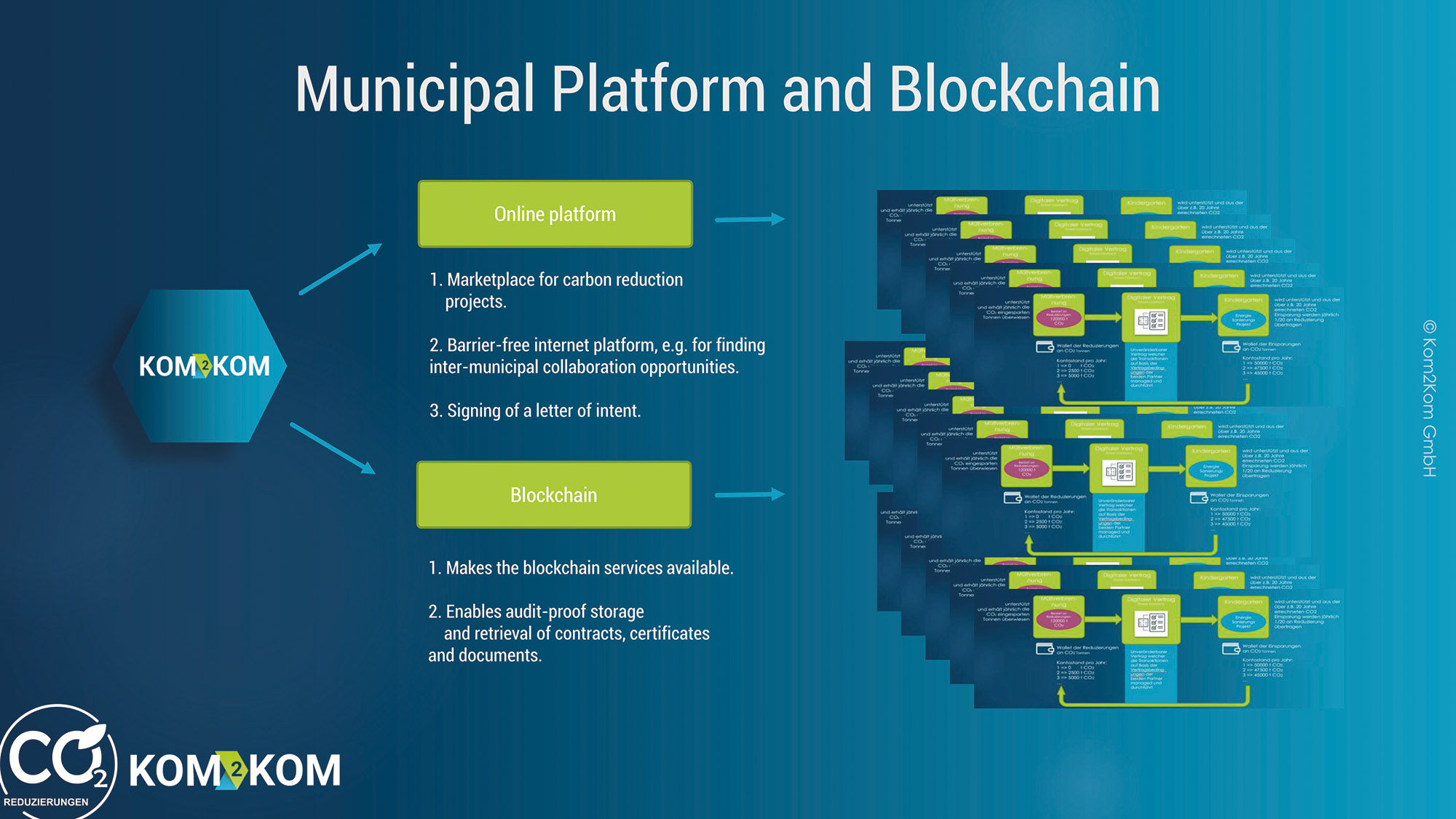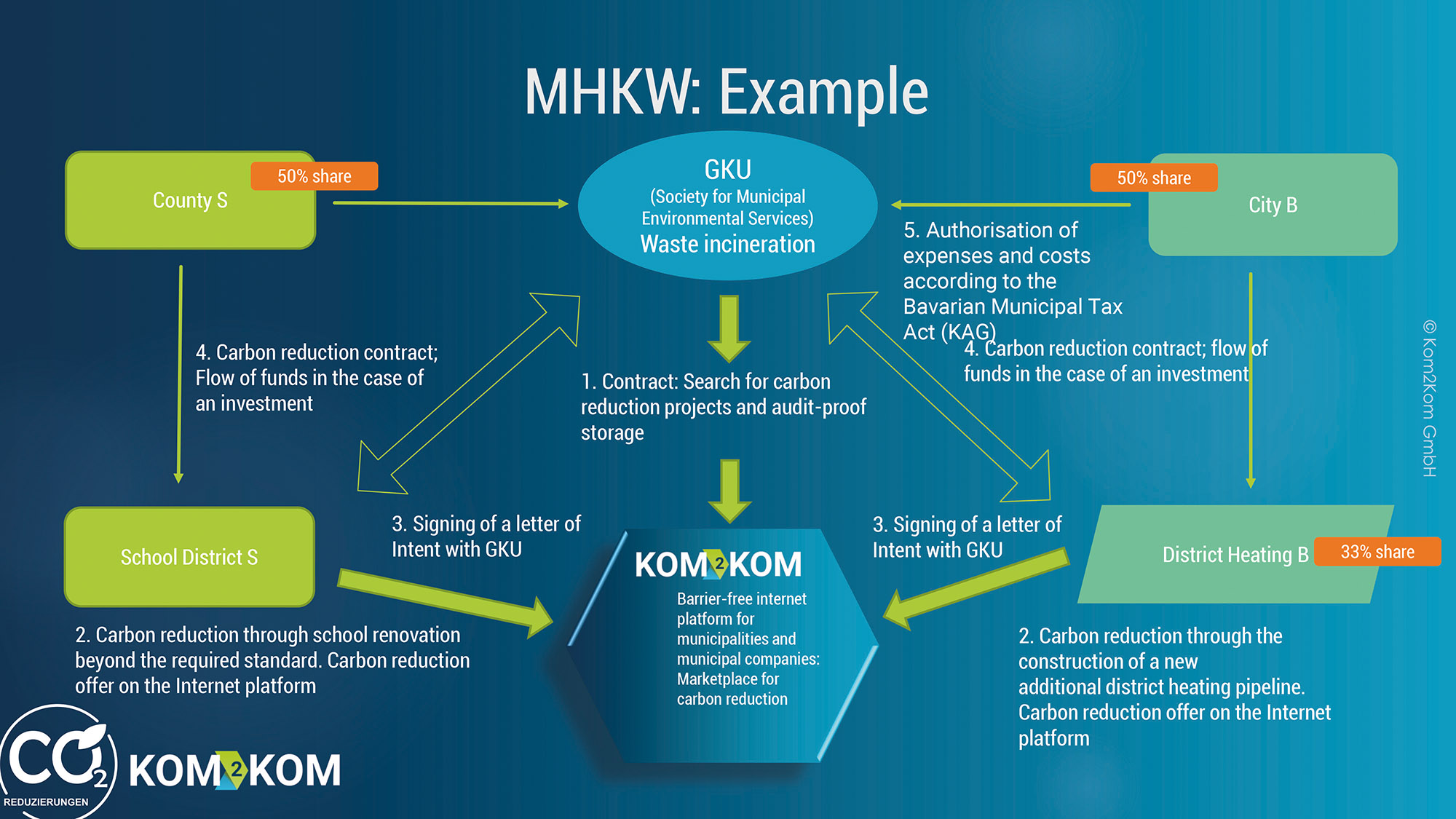- „Traceable“
- The climate protection project provider must demonstrate that the greenhouse gas reduction will actually take place if the project is carried out. While there are various methodologies (specifications) for climate protection projects, the marketplace does not specify which one to use. An external expert and planner must determine which methodology is best suited to achieve the reduction. A deviation from this approach is only permitted in standard cases where the parameters are easy to trace and of low complexity.
- „Assessable“
- The amount of the reduction (in tons of carbon savings) must also be calculated by an external expert and planner. If the supplier of the carbon reduction project accepts the offer of the consumer of CO2 emissions and the general conditions of the KOM2KOM platform, a letter of intent is automatically agreed and the current EU ETS market price is fixed, resulting in an assessment of the price per ton of CO2.
- „Implemented“
- In larger projects, the reduction must be checked at appropriate intervals. The checks must be included in the agreement. Depending on the reduction target and the type of project, there are various options available. These include, for example, reading the heat feed-in in the case of heat supply or determining the material input in the case of bio-fermentation.
- „Can only be implemented by funding“
- It would not be possible to achieve the reduction of greenhouse gases aimed at by the project without the expected proceeds from the sales of CO2 emissions. This means that a measure that is already economical in itself is not eligible for the project. The definition of economic viability is based on EU regulations relating to state aid law, according to which a project is economically viable if it has a positive present value, taking into account a minimum return under state aid law. The period for tax depreciation is fixed by agreement, and any reductions extending beyond this accrue to the general public.
- „Legally additional“
- A project must be implemented in addition to the existing statutory provisions and obligations applying to the reduction of emissions. This means that the project will exceed statutory standards.
- „Non-reversible“ oder „permanent“
- The emission savings must be permanent and must be taken into account by using an appropriate discount (buffer). This is especially difficult in the case of projects for nature, such as forest or moorland projects. The requirement is met if fossil fuels are displaced, e.g. by heat pipes, energy renovation and alternative drives. KOM2KOM defines 40 years as the minimum criterion for “permanent”.
- „Objectively proven“
- The climate protection project provider must demonstrate that the greenhouse gas reduction will actually take place if the project is carried out. While there are various methodologies (specifications) for climate protection projects, the marketplace does not specify which one to use.
- „Validation and verification“
- The reduction must be validated and verified in accordance with the KOM2KOM method by a verification body accredited by the German Accreditation Body (DAkkS) pursuant to ISO 14065, so that the quantity of the reduction is objectified. Deviations from this principle are only made in so-called model cases for reasons of economic efficiency and materiality. Model cases include projects and Greenhouse Gas (GHG) declarations corresponding to the ISO 14064-2 validated KOM2KOM model case and those where the reductions are less than 15,000 tons of CO2 equivalent.
- „Contribution Claim“
- The KOM2KOM method uses the Contribution Claim approach, according to which municipalities and companies can promote climate protection by financial contributions. This climate contribution must meet the strict KOM2KOM quality criteria and is valued at the daily EU ETS market price.
























